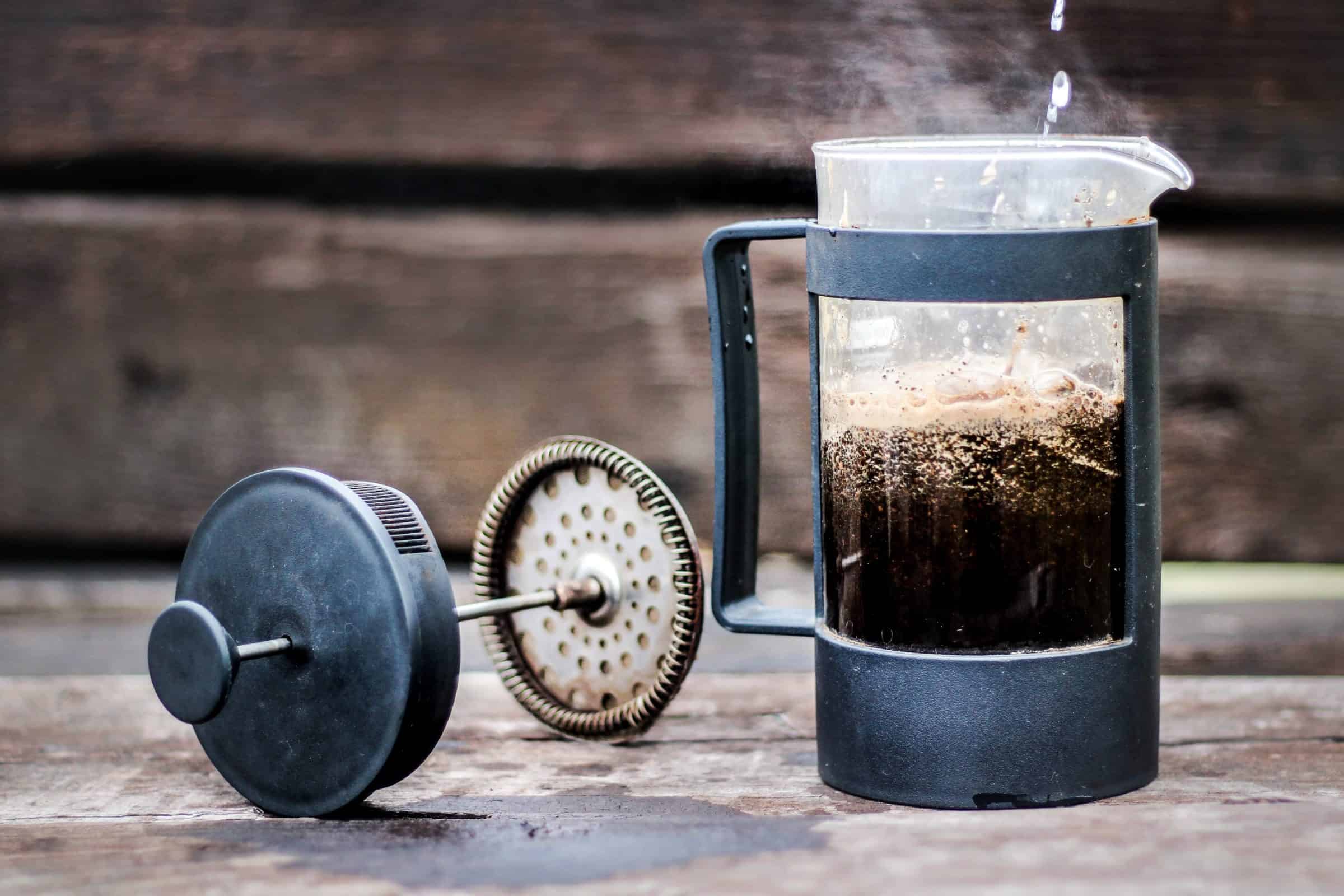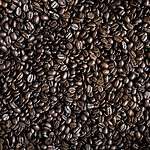Affiliate disclosure: We are reader-supported. This means that we may earn a commission if you buy an item using one of the links. For our reviews, we purchase products ourselves and review them independently. Read more about our methodology.
Summary of Differences
Despite both making coffee, a French press and a drip coffee maker are different in how they brew, what brew tastes like, what else you can use them for, and how much they cost.
A French press is a manual coffee maker that uses immersion and pressing to brew coffee. It’s known for the earthy, vibrant flavor it brings to coffee. On the other hand, a drip coffee maker is an electric coffee maker that brews coffee with a clean, round flavor.
Drip coffee makers cost more than French presses and are generally larger, which means they work great for brewing large batches of coffee. They also have features like delayed brewing, allowing you to set when the machine starts brewing.
French presses have multiple uses besides making standard coffee. You can use a French press to make cold brew and espresso-style drinks, froth milk, and brew tea. Most drip coffee makers only make drip coffee.
| French Press | Drip Coffee | |
|---|---|---|
| Prices | $20 to $30 for mid-tier 30-oz model | $50 to $150 for mid-tier model |
| Supplies needed | None | Paper filters (if applicable; some machines have reusable filters) |
| Grind size | Coarse | Medium |
| Sizes offered | Single-cup up to 60 ounces | Single-cup up to 18-cup (for personal use; larger sizes exist for commercial use) |
| Materials | Glass, ceramic, metal; most models have plastic components too | Plastic, metal, and glass |
| Great for… |
|
|
How are French Press and Drip Coffee Different?
One of the most significant differences between drip coffee and French press coffee is the flavor difference.
French press is known for its rich, earthy, and bold flavor. These intense flavors come from steeping the coffee grounds in water. On the other hand, drip coffee has a clean, round finish that is more mellow than a French press brew. The flavor of drip coffee can also vary greatly depending on the machine you use.
Brewing Differences
A French press is a manual coffee maker that brews coffee using immersion and press methods. When using a French press, you add coffee grounds and hot water into the chamber. After the coffee steeps for several minutes, you push the plunger down to push the coffee grounds to the bottom of the chamber. The plunger helps ensure no coffee grounds end up in your cup and extracts additional oils and flavors from the coffee grounds.
A drip coffee maker works similarly to a pour-over coffee maker. The main difference between a drip coffee maker and a pour-over coffee maker is whether the coffee maker is manual or not. Drip coffee makers are generally electric, whereas pour-over coffee makers are commonly manual.
No products found.
When you use a drip coffee machine, you place the coffee grounds into a filter and run the machine. The machine will then pour hot water over the coffee grounds. The hot water flows through the coffee grounds and filter and drips into the carafe or cup underneath.
Some drip coffee makers require you to use a paper filter. Others have a built-in reusable filter. The reusable filters are normally made from stainless steel. Some may have a thin coating of gold over the stainless steel. They have this coating because gold is considered a neutral metal and does not affect the taste of your coffee (as stainless steel can).
Grind Size
Drip coffee makers generally require a medium grind. A too-fine grind does not allow the water to flow through the coffee grounds easily. This results in an over-extracted brew. A too-coarse grind allows the water to flow too easily, which yields an under-extracted brew.
French presses use a coarse grind. Each coffee ground resembles a piece of flaky sea salt in a coarse grind. French presses use a coarser grind because the coffee grounds are in contact with water for a long time. Unlike a drip machine, the coffee grounds in a French press steep in the water. A coarser grind ensures that the coffee is not over-extracted.
Size
French presses are generally smaller than drip coffee makers, so they are a better choice if space is a factor in your buying decision. While there are some small drip coffee machines, they are still bigger than all but the largest-sized French presses.
The largest French presses generally run up to 60 ounces or 12 standard-sized cups of coffee. Most standard-sized French presses are around 30 ounces or six cups of coffee. Some of the largest personal-sized drip coffee makers can make up to 24 cups, though the standard sizes are between 10 and 14 cups.
If you drink coffee every day, you’ll want to leave a drip coffee machine on the countertop due to its bulkiness, which can eat up valuable kitchen real estate. Even if you use a French press every day, it can easily fit into a cabinet when not in use.
Alternative Uses & Features
Because a French press is a manual coffee maker, it doesn’t have any bells and whistles like an electric machine will. That said, a French press has a few alternative uses. You can use it to make cold brew and espresso-style drinks (though it can’t make true espresso – only an espresso maker can do that). You can also steep tea in a French press. Finally, you can use a French press as a manual milk frother in a pinch.
Unlike a French press, a drip coffee maker has many features and few alternative uses. Most drip coffee machines come with a delayed brewing feature, which allows you to fill the machine with coffee grounds and water and set a time to start brewing. This feature is fantastic if you want to wake up to a hot pot of coffee.
Higher-end drip coffee machines may also have small-batch brewing, auto-pause features, and strength selectors. These can all help to personalize your experience with the appliance.
Finally, some drip coffee machines can also make cold brew, but you’ll need to look for a machine that lists that as a feature. Drip coffee makers cannot make espresso or tea. They cannot froth milk either.
Cleaning
We prefer cleaning a French press over a drip coffee machine any day of the week. While most French presses are not dishwasher safe, they are easy to handwash with soapy water. On occasion, you’ll need to disassemble the plunger to clean each component. Doing this removes any oil buildup, which can cause your coffee to taste sour.
With a drip coffee machine, you must clean the carafe, filter basket, and reusable filter (if applicable) each time you use the coffee maker. Depending on the manufacturer, these may or may not be dishwasher safe. I hate washing the carafe each time because I don’t make that much coffee. It feels wasteful cleaning a large urn every time I want coffee.
No products found.
Similarly to a French press, a drip coffee machine requires occasional deep cleaning because the water chamber and interior components can develop mineral buildup. Cleaning usually entails using a descaling solution and running at least one water-only brew cycle through the machine. Some machines can handle using a white vinegar and water mixture, but this mixture can damage other machines.
If you don’t descale your drip coffee maker, especially if you have hard water, it will begin to affect the taste of your coffee.
Some folks like to use filtered water in their drip coffee machines to reduce mineral buildup and improve the taste of their coffee. Some machines can even accommodate charcoal filters to filter the water.
Price
A mid-tier French press that holds around 30 ounces runs from $20 to $30. Higher-end models run around $50 up to over $100.
A typical 10-cup drip coffee maker runs around $50 to $150. High-end models can cost several hundred dollars. Some very inexpensive models run under $50. Different sizes vary a bit in price, but the main driver of price differences is the quality of the machine rather than its size.
Which One Do We Prefer?
I rarely use a drip coffee machine at home unless I’m reviewing one. We live in New York City, and New York City apartments are small, so I have limited countertop space. My espresso machine is the only coffee maker that lives on my countertops. It can make drip coffee, but I rarely use it for that.
I also mostly make coffee for one or two people. Most drip coffee machines make coffee for a larger group of people. I rarely want more than one to three cups of coffee at a time. Given how big most drip coffee makers are, it’s impractical for me to use them daily.
Besides the space consideration, I like the control afforded to me by a French press (and generally all manual coffee makers). With a French press, I appreciate that I can control brew time, water temperature, and brew methods to make a perfect cup. I can’t generally control these with a drip coffee machine unless it’s a high-end coffee maker.
I also like that many of my other coffee makers have multiple uses. My espresso machine can froth milk or dispense hot water for tea. The French press can also make tea or make cold brew. It gives me more options per device compared to a drip coffee machine.


